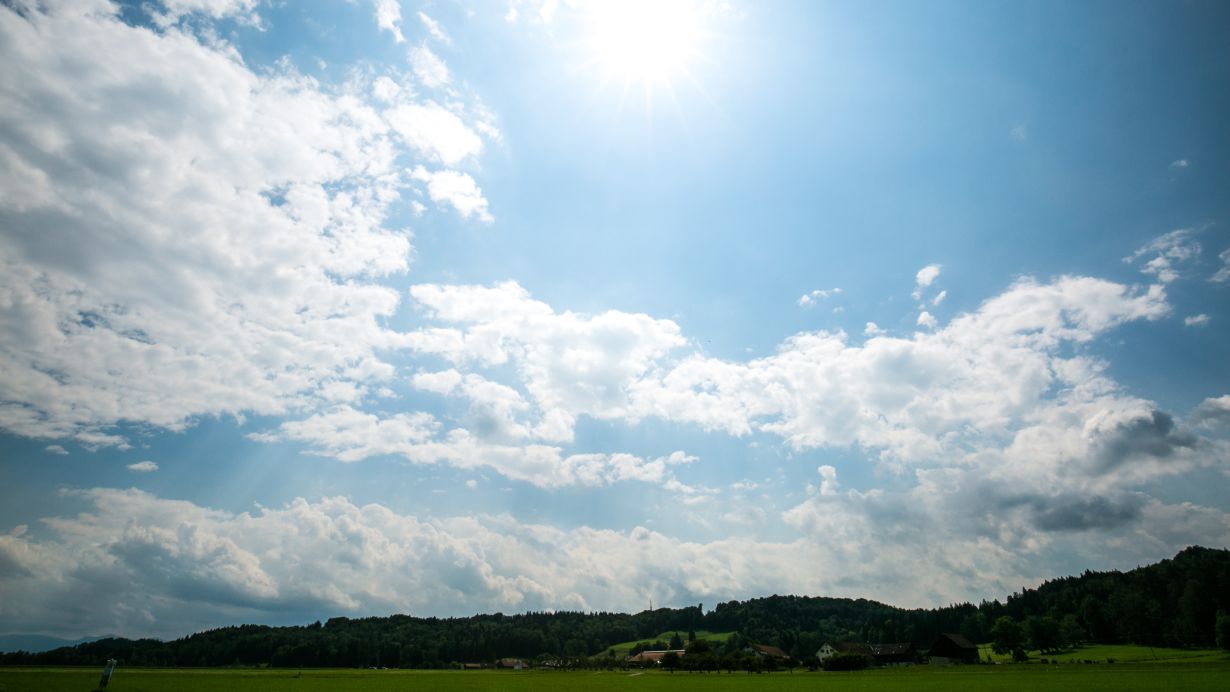Land surface temperature is an important indicator of climate change. It is mainly influenced by radiation, but also by evaporation and air movements. A new study of researchers from the Max Planck Institute for Biogeochemistry in Jena and Karlsruhe Institute of Technology (KIT) now shows that these complex processes can be explained with the help of simple and foreseeable patterns. The researchers report in PNAS. (DOI: 10.1073/pnas.2220400120)
Temperatures of the Earth’s surface are determined by the interaction of warming and cooling. Warming results from solar radiation and the additional greenhouse effect in the atmosphere. Cooling is due to long-wave radiation, water evaporation, and heat released through turbulent air movements. While researchers understand radiation well and can measure it, the effects of evaporation and air movements are not yet sufficiently understood.
New Approach Based on Simple Physical Principles
In their study, researchers used basic physical principles: “Turbulent movement requires an energy source, just like a car needs an engine to drive it,” explains Erwin Zehe, Professor for Hydrology at KIT’s Institute for Water and River Basin Management and co-author of the study. In this case, surface warming is the engine that drives the transportation of warm air into the atmosphere. Air movement removes heat from the ground, as a result of which the surface is cooled. “The more turbulent air movement takes place, the more is the surface cooled down. It is like blowing on hot soup. The more you blow, the quicker it will cool down,” says Sarosh Alam Ghausi, hydrologist at the Max Planck Institute for Biogeochemistry in Jena and first author of this study. As cooling counteracts heat production, a specific maximum energy production results. From this, the cooling effect of evaporation and air movements on the land surface can be determined.
Several Effects Are Responsible for Temperature Differences
Based on satellite data for radiation, the researchers calculated warming and cooling rates. Estimated temperatures, evaporations, and air movements were found to be very close to the measured values. Then, the researchers studied differences of surface temperatures on different continents. Why are rainforests cooler than deserts? “I thought that water scarcity would make the desert warmer,” Ghausi says, “because water evaporation, together with air movements, has a cooling effect that is not encountered in a desert where water is scarce. If you blow over your hand, it will become cooler. If your hand is wet, cooling increases, because the evaporation heat is removed,” Zehe explains. However, water absence alone cannot fully explain the temperature difference. The researchers attributed higher temperatures in the desert to another two effects: Firstly, there are fewer clouds in deserts, such that the land surface is heated more by solar radiation than in a rainforest. Secondly, deserts are mostly located in the subtropics, where the atmosphere is heated by the Hadley circulation, a circulation system between the subtropics and the equator. But this movement takes place in the atmosphere rather than on the land surface. This causes less cooling and more surface warming.
Approach Improves Modeling of Evaporation
Zehe considers the new approach to be of high potential: “As a rule, evaporation is considered the key to cooling the environment. The results are surprising, as we have shown that several factors interact in a very complex way. This approach might push research and become a gold standard. It may considerably improve empirical standards in evaporation modeling.” The authors expect that their approach will enable them to better identify basic mechanisms of climate.
Original Publication
Sarosh Alam Ghausi, Yinglin Tian, Erwin Zehe, and Axel Kleidon: Radiative controls by clouds and thermodynamics shape surface temperatures and turbulent fluxes over land. Proceedings of the National Academy of Sciences, 2023. DOI: 10.1073/pnas.2220400120
https://www.pnas.org/doi/10.1073/pnas.2220400120
Details on the KIT Climate and Environment Center
Being “The Research University in the Helmholtz Association”, KIT creates and imparts knowledge for the society and the environment. It is the objective to make significant contributions to the global challenges in the fields of energy, mobility, and information. For this, about 10,000 employees cooperate in a broad range of disciplines in natural sciences, engineering sciences, economics, and the humanities and social sciences. KIT prepares its 22,800 students for responsible tasks in society, industry, and science by offering research-based study programs. Innovation efforts at KIT build a bridge between important scientific findings and their application for the benefit of society, economic prosperity, and the preservation of our natural basis of life. KIT is one of the German universities of excellence.

